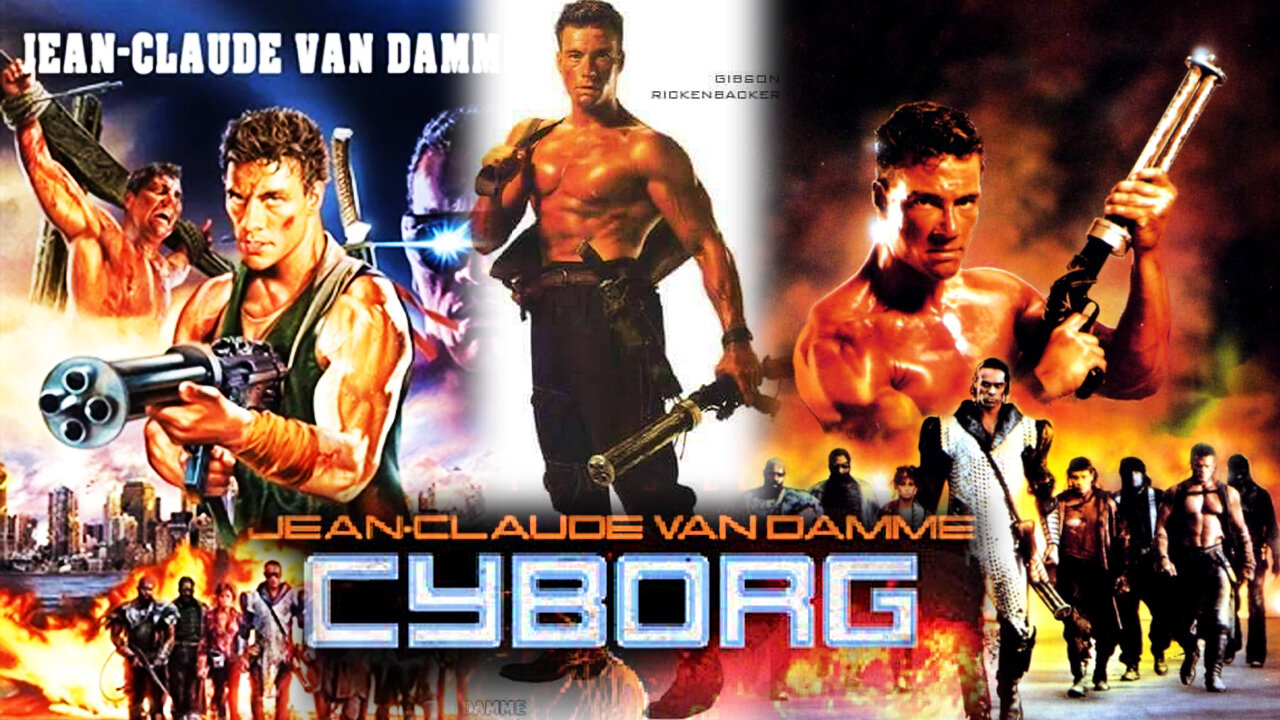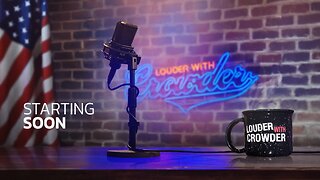Premium Only Content

Cyborg van damme in action
Description and definition
"Cyborg" is not the same thing as bionics, biorobotics, or androids; it applies to an organism that has restored function or, especially, enhanced abilities due to the integration of some artificial component or technology that relies on some sort of feedback, for example: prostheses, artificial organs, implants or, in some cases, wearable technology.[2] Cyborg technologies may enable or support collective intelligence.[3] A related, possibly broader, term is the "augmented human".[2][4][5] While cyborgs are commonly thought of as mammals, including humans, they might also conceivably be any kind of organism.
Placement and distinctions
D. S. Halacy's Cyborg: Evolution of the Superman (1965) featured an introduction which spoke of a "new frontier" that was "not merely space, but more profoundly the relationship between 'inner space' to 'outer space' – a bridge...between mind and matter."[6]
In "A Cyborg Manifesto", Donna Haraway rejects the notion of rigid boundaries between humanity and technology, arguing that, as humans depend on more technology over time, humanity and technology have become too interwoven to draw lines between them. She believes that since we have allowed and created machines and technology to be so advanced, there should be no reason to fear what we have created, and cyborgs should be embraced because they are now part of human identities.[7] However, Haraway has also expressed concern over the contradictions of scientific objectivity and the ethics of technological evolution, and has argued that "There are political consequences to scientific accounts of the world."[8]
Biosocial definition
According to some definitions of the term, the physical attachments that humans have with even the most basic technologies have already made them cyborgs.[9] In a typical example, a human with an artificial cardiac pacemaker or implantable cardioverter-defibrillator would be considered a cyborg, since these devices measure voltage potentials in the body, perform signal processing, and can deliver electrical stimuli, using this synthetic feedback mechanism to keep that person alive. Implants, especially cochlear implants, that combine mechanical modification with any kind of feedback response are also cyborg enhancements. Some theorists[who?] cite such modifications as contact lenses, hearing aids, smartphones,[10] or intraocular lenses as examples of fitting humans with technology to enhance their biological capabilities. Also the emerging mood of implanting microchips inside the body (mainly the hands), to make financiary operations like a contactless payment, or basic tasks like opening a door, can be considered another example.
As cyborgs currently are on the rise, some theorists[who?] argue there is a need to develop new definitions of aging. For instance, a bio-techno-social definition of aging has been suggested.[11]
The term is also used to address human-technology mixtures in the abstract. This includes not only commonly-used pieces of technology such as phones, computers, the Internet, and so on, but also artifacts that may not popularly be considered technology; for example, pen and paper, and speech and language. When augmented with these technologies and connected in communication with people in other times and places, a person becomes capable of much more than they were before. An example is a computer, which gains power by using Internet protocols to connect with other computers. Another example is a social-media bot—either a bot-assisted human or a human-assisted-bot—used to target social media with likes and shares.[12] Cybernetic technologies include highways, pipes, electrical wiring, buildings, electrical plants, libraries, and other infrastructure that people hardly notice, but which are critical parts of the cybernetics that humans work within.
Bruce Sterling, in his Shaper/Mechanist universe, suggested an idea of an alternative cyborg called 'Lobster', which is made not by using internal implants, but by using an external shell (e.g. a powered exoskeleton).[13] Unlike human cyborgs, who appear human externally but are synthetic internally (e.g., the Bishop type in the Alien franchise), Lobster looks inhuman externally but contains a human internally (such as in Elysium and RoboCop). The computer game Deus Ex: Invisible War prominently features cyborgs called Omar, Russian for 'lobster'.
-
 LIVE
LIVE
iCkEdMeL
17 minutes agoICE SHOOTS Popular TikToker ‘Richard’ During Raid in South L.A.?! 😳 What Really Happened LIVE
329 watching -
 1:05:27
1:05:27
DeVory Darkins
2 hours ago $27.77 earnedTrump scores HISTORIC IMMIGRATION WIN as Democrats STUNNED by ballroom renovations
98.8K33 -

The Rubin Report
1 hour agoDark Future Predictions & Exposing the Truth About Australia’s Past | Tony Abbott
8.83K3 -
 1:57:45
1:57:45
The Charlie Kirk Show
3 hours agoThis is What Democracy Looks Like + Oxford Union Election Fraud? | Dr. Orr, Ogoloma, Harmon | 10.21
60.4K18 -
 26:07
26:07
Lady Decade
10 hours agoGaming Feminists Just Discovered Islam - & It’s Not Going Well
14.3K4 -
 3:52
3:52
Michael Heaver
2 hours agoErupting UK Voters Send FEROCIOUS Message
26 -
 1:05:52
1:05:52
Timcast
3 hours agoJudge Rules DHS Agents CAN BE ARRESTED, Trump WINS On Right To Deploy National Guard
124K95 -
 2:01:37
2:01:37
Steven Crowder
5 hours agoWe Have the Proof: These are the Immigrants Destroying America and The West
333K274 -
 LIVE
LIVE
Side Scrollers Podcast
1 day ago🔴SIDE SCROLLERS FUND-A-THON🔴DAY 2🔴100% REVENUE HELPS CHANGE CULTURE!
1,318 watching -
 1:32:53
1:32:53
Rebel News
2 hours agoCarney 'controlling' Trump, Alberta municipal elxns, Too many new Canadians | Rebel Roundup
20.2K8